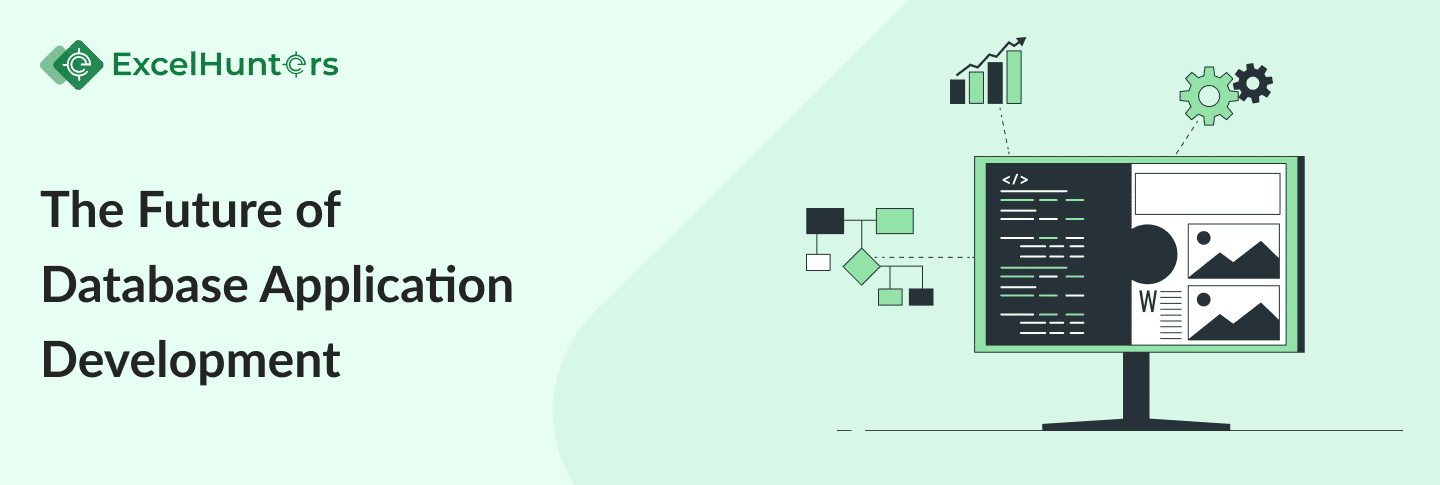The Future of Database Application Development: Trends and Technologies to Watch
Quick Summary
In the digital age, databases are the backbone of countless applications, powering everything from e-commerce platforms to social media networks. As technology continues to evolve, so too does the landscape of database application development. In this essay, we will explore the trends and technologies shaping the future of this field, focusing on key areas such as cloud computing, big data, artificial intelligence, and blockchain.
Cloud Computing: The Foundation of Modern Database Applications

Cloud computing has revolutionized the way databases are built, deployed, and managed. Traditionally, organizations would have to invest in expensive hardware and infrastructure to host their databases on-premises. However, cloud computing platforms such as Amazon Web Services (AWS), Microsoft Azure, and Google Cloud have made it possible to access scalable and flexible computing resources on-demand.
One of the key trends in database application development is the migration of databases to the cloud. According to a report by Gartner, Inc., “By 2022, 75% of all databases will be deployed or migrated to a cloud platform.” This shift towards cloud-based databases offers several advantages, including cost savings, improved scalability, and enhanced security.
For example, AWS offers a range of database services such as Amazon RDS (Relational Database Service) and Amazon DynamoDB (NoSQL database), which allow developers to quickly provision and manage databases without worrying about underlying infrastructure. Similarly, Microsoft Azure provides services like Azure SQL Database and Cosmos DB, which are designed to handle diverse workloads and offer global distribution.
Moreover, cloud providers are constantly innovating to offer new features and capabilities that enable developers to build more robust and efficient database applications. For instance, AWS recently introduced Amazon Aurora, a high-performance relational database engine, and Amazon Redshift, a fully managed data warehouse service. These services leverage the power of cloud computing to deliver improved performance, reliability, and scalability.
In conclusion, cloud computing is the foundation of modern database applications, enabling organizations to leverage scalable and flexible resources to build and deploy databases more efficiently. As more businesses embrace cloud technologies, we can expect to see continued growth and innovation in the field of database application development.
Big Data: Leveraging Data at Scale
Big data has emerged as a major driver of innovation in database application development. With the proliferation of digital devices and sensors, organizations are generating vast amounts of data at an unprecedented rate. This data presents both opportunities and challenges for database developers.
On one hand, big data technologies such as Hadoop and Spark allow organizations to process and analyze massive datasets in real-time, enabling them to gain valuable insights and make informed decisions. These technologies provide scalable and distributed computing frameworks that can handle petabytes of data across clusters of commodity hardware.
On the other hand, managing and storing big data presents significant challenges, particularly in terms of scalability, performance, and security. Traditional relational databases are not well-suited for handling large volumes of unstructured data, leading to the rise of NoSQL databases such as MongoDB, Cassandra, and Couchbase.
NoSQL databases are designed to scale horizontally, allowing organizations to store and retrieve large volumes of data across multiple nodes. These databases are particularly well-suited for use cases such as real-time analytics, content management, and personalization.
In addition to NoSQL databases, organizations are also exploring other technologies such as in-memory databases and graph databases to address the unique challenges of big data. In-memory databases such as Redis and Memcached offer high-performance caching and data processing capabilities, while graph databases like Neo4j enable organizations to model and query complex relationships in their data.
Overall, big data is driving innovation in database application development, pushing developers to rethink traditional approaches and embrace new technologies that can handle data at scale. As organizations continue to generate and collect more data, we can expect to see increased investment in big data technologies and a continued focus on scalability, performance, and security.
Artificial Intelligence: The Rise of Intelligent Databases
Artificial intelligence (AI) is another trend shaping the future of database application development. With recent advancements in machine learning and natural language processing, organizations are increasingly turning to AI-powered databases to automate tasks, gain insights, and improve decision-making.
One area where AI is making a significant impact is in database management and optimization. Traditional databases rely on manual tuning and configuration to achieve optimal performance, which can be time-consuming and error-prone. AI-powered databases, on the other hand, use machine learning algorithms to automatically optimize performance based on workload patterns and usage trends.
For example, Oracle’s Autonomous Database leverages machine learning to automatically provision, tune, and secure databases, reducing the need for manual intervention and human error. Similarly, Microsoft’s Azure SQL Database uses AI to monitor performance and detect anomalies, allowing organizations to proactively address issues before they impact users.
In addition to database management, AI is also being used to enhance data analysis and decision-making. For instance, AI-powered analytics platforms such as IBM Watson and Google Cloud AI offer advanced capabilities for predictive modeling, natural language processing, and image recognition, enabling organizations to extract valuable insights from their data.
Furthermore, AI is driving innovation in the field of database search and retrieval. Traditional keyword-based search engines are limited in their ability to understand context and intent, leading to suboptimal results. AI-powered search engines, however, use techniques such as natural language understanding and semantic search to deliver more relevant and personalized results.
In conclusion, AI is transforming the way databases are managed, analyzed, and accessed, enabling organizations to leverage the power of machine learning to automate tasks, gain insights, and improve decision-making. As AI technologies continue to mature, we can expect to see increased adoption of intelligent databases and a shift towards more autonomous and self-driving database systems.
Blockchain: Securing Data and Transactions
Blockchain technology has gained significant attention in recent years for its potential to revolutionize database applications, particularly in terms of security and transparency. Originally developed as the underlying technology behind cryptocurrencies such as Bitcoin, blockchain is now being explored for a wide range of applications beyond finance.
At its core, blockchain is a distributed ledger that records transactions in a secure and immutable manner. Each transaction is cryptographically linked to the previous transaction, creating a chain of blocks that cannot be altered or tampered with. This makes blockchain an ideal solution for applications that require tamper-proof and transparent record-keeping, such as supply chain management, identity verification, and voting systems.
In the context of database application development, blockchain has several potential use cases. One of the most promising applications is in the area of data security and integrity. By storing data on a blockchain, organizations can ensure that it remains tamper-proof and verifiable, reducing the risk of data breaches and fraud.
For example, healthcare providers could use blockchain to securely store patient records and ensure that they cannot be altered without authorization. Similarly, supply chain companies could use blockchain to track the movement of goods and verify their authenticity, reducing the risk of counterfeit products entering the market.
In addition to data security, blockchain also has the potential to streamline transactions and eliminate intermediaries. Smart contracts, which are self-executing contracts with the terms of the agreement directly written into code, can automate the transfer of assets and enforce business rules without the need for intermediaries.
For instance, real estate transactions could be facilitated through smart contracts, allowing buyers and sellers to exchange property rights directly on the blockchain without the need for a third-party escrow agent. This could significantly reduce transaction costs and streamline the process of buying and selling property.
Overall, blockchain technology holds promise for revolutionizing database applications by providing a secure, transparent, and efficient platform for storing and transacting data. As organizations continue to explore the potential of blockchain, we can expect to see increased adoption of this technology and the emergence of new use cases that leverage its unique capabilities.
Conclusion
In conclusion, the future of database application development is bright, with a myriad of trends and technologies shaping the landscape. From cloud computing and big data to artificial intelligence and blockchain, organizations have a wealth of tools and capabilities at their disposal to build more efficient, scalable, and secure database applications.
As technology continues to evolve, it is essential for database developers to stay informed about the latest trends and innovations in the field. By embracing new technologies and adopting best practices, organizations can unlock new opportunities and stay ahead of the competition in the rapidly changing world of database application development.
Looking for
Consultations?Our Expertise
- 8 + years of experience
- Adept Developers
- Excel at Agile Development
- Cost-Effective

